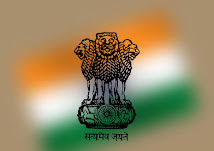"A social initiative will produce a better impact when it is targeted towards the economically poorer sections of the society. The richer the beneficiaries are, the lesser social impact it has.."
While in general this point has a validity, it has to be revisited for every specific case. Here is an example. A team of my friends and I conducted a science demo in a private school nearby. When I talked about this, "Don't you think your initiative would be more useful to students of government schools?" was one question that popped up universally. My answer is "In my case doing it in *this* private school is likely to have a higher social impact" . Why?
1. This private school doesn't have a lab infrastructure in spite of the students paying a nominal school fee (Rs. 200/- per month).
2. The students here do have a capability to read, listen to and understand English, Telugu and Hindi which provides us flexibility in our implementation. So, it gets easier for us to get more students to start "thinking and reasoning science" - a better success rate at our initiative. On the other hand, a government school on which we are working on the ability to grasp English is lesser providing us with challenges (lesser number of teachers from our office)
Much more importantly, access to better education sure is relatively much more difficult for the poor. However, schools that fall in the economic category of the one that we are working on also face problems faced by government schools (non-availability of teachers, labs etc.). In addition to that they also suffer the ignorance of NGOs that rush to help poor quality government schools. It is almost as if these students are paying Rs. 200/- per month to be ignored!
Thankfully, in our case, we need to ignite as many minds to think and reason (in science and others..). In our eyes, whether the students have the ability to pay Rs.200/- or not, if their inclination to reason is lacking, they are equally poor! Only the former is equipped with a skill (English language) that offers flexibility for us to make a better impact.
A society, apart from being categorized into economically richer and poorer, can also be categorized into rich and poor based on other criteria. And the economically richer need not be richer (or have better opportunity) in all the other categories. Social upliftment, one must remember, is not only the upliftment of the economically poorest, but the upliftment of the society as a whole.









